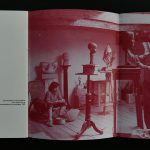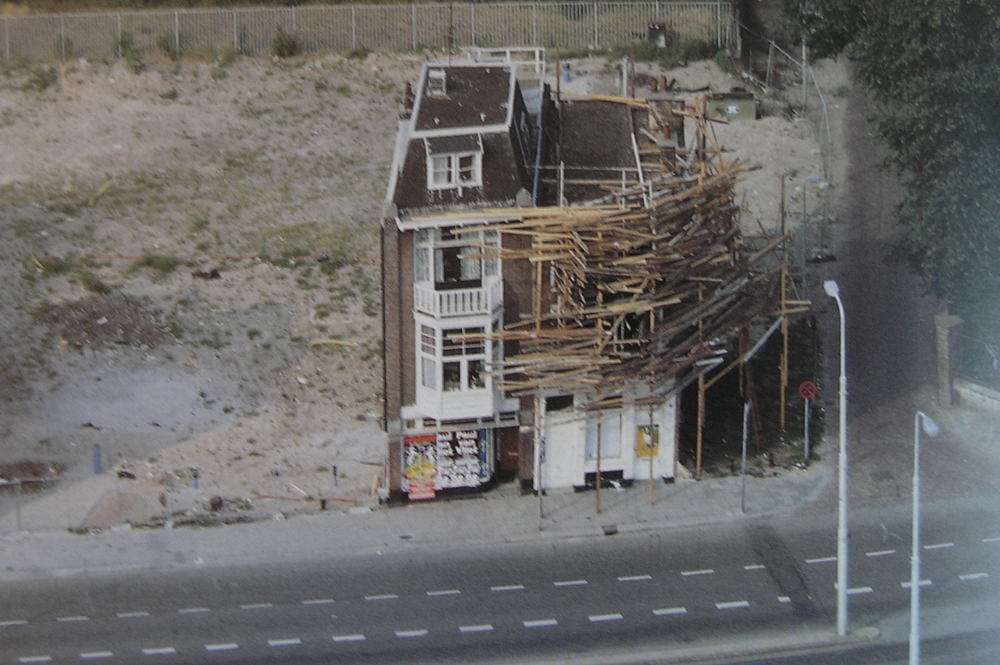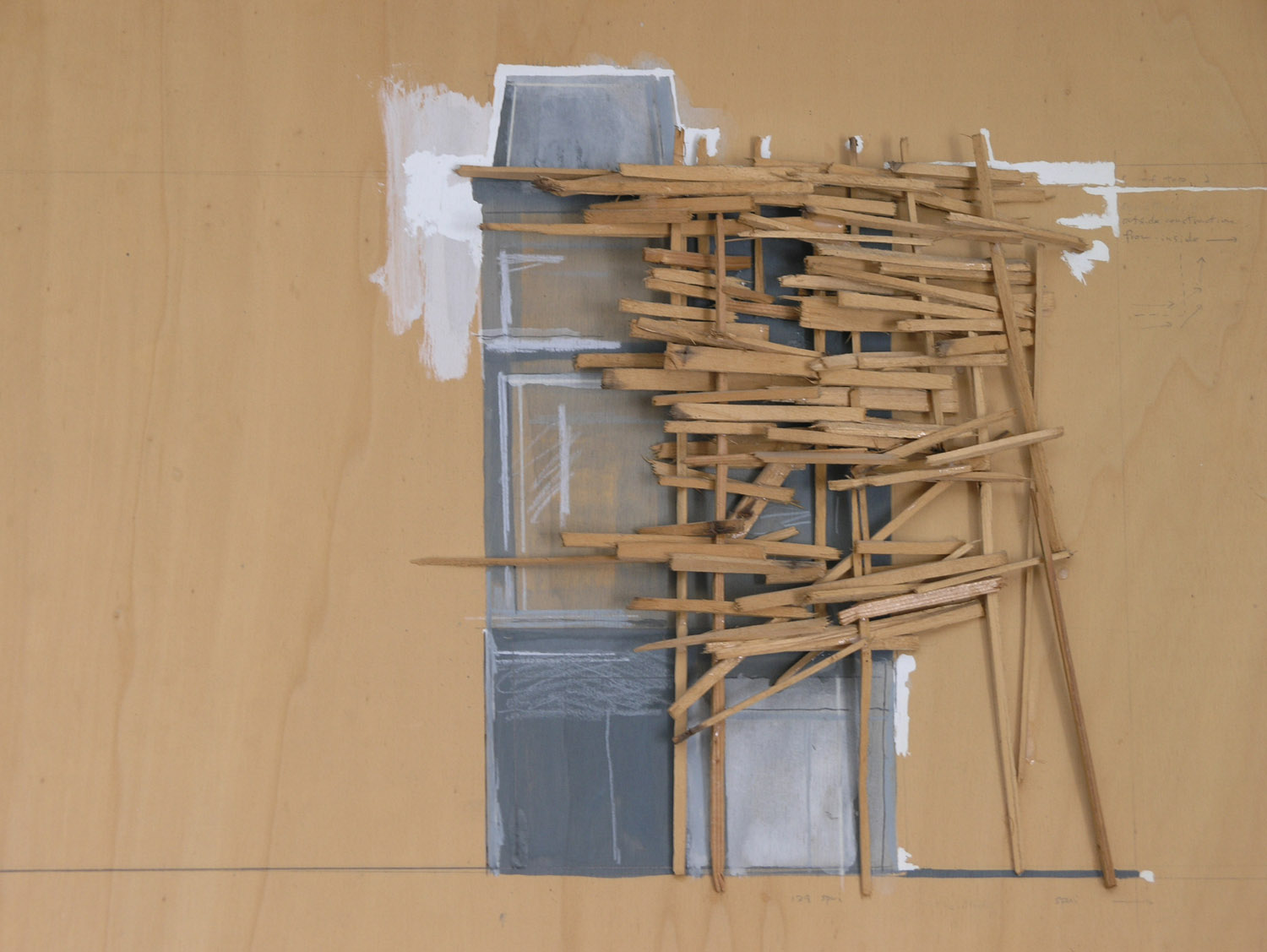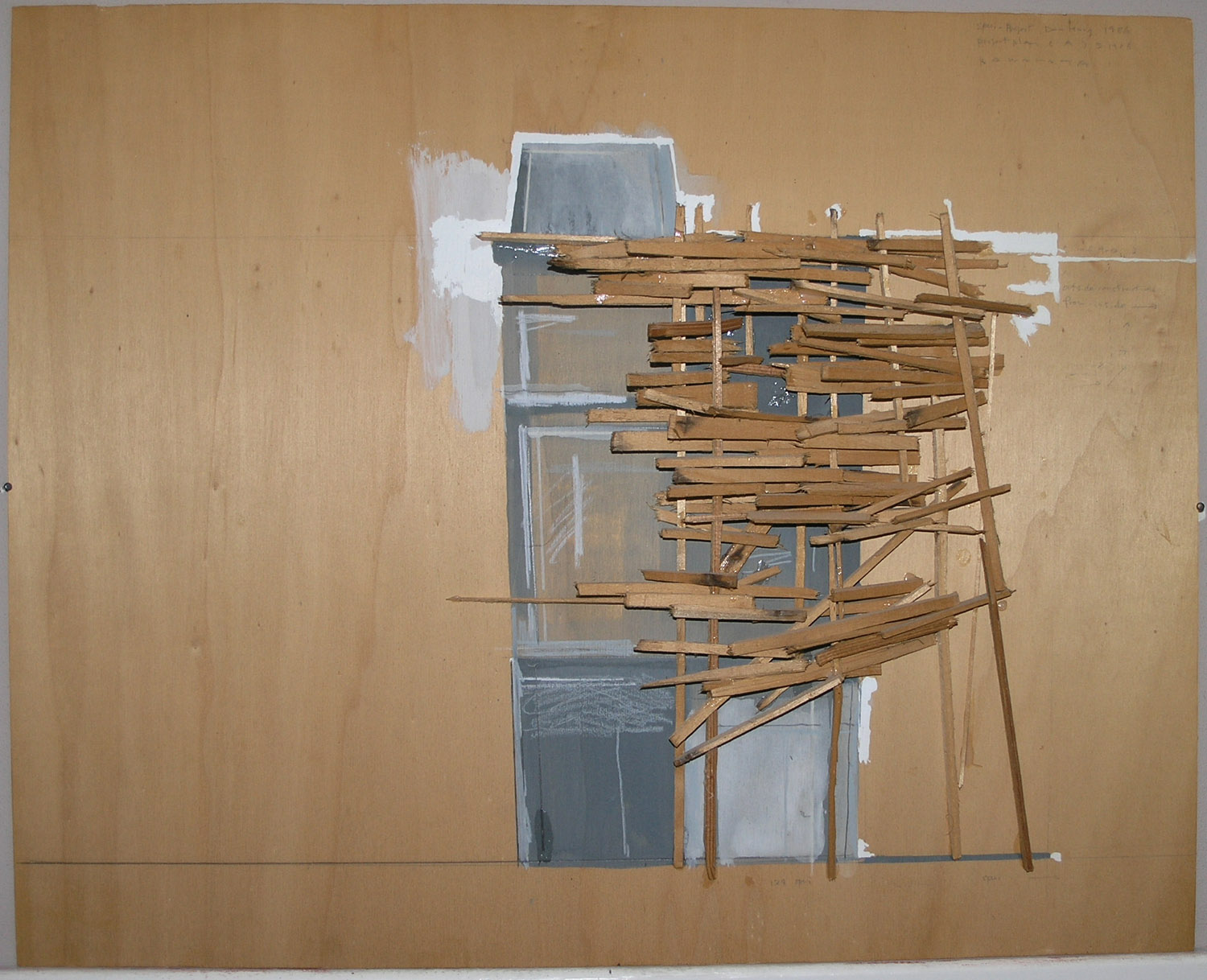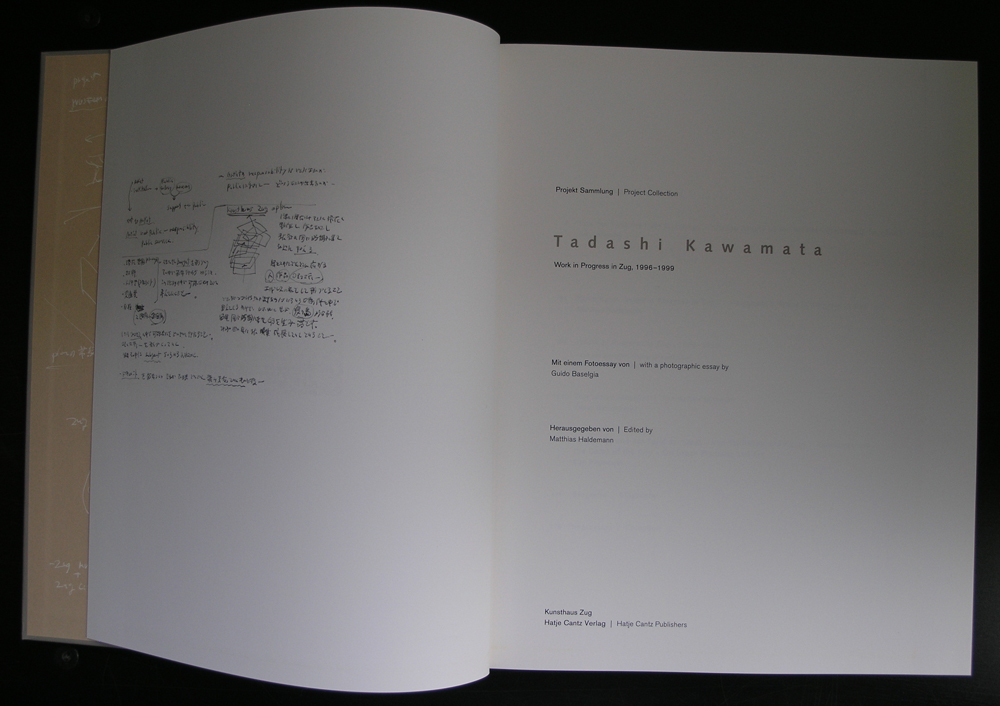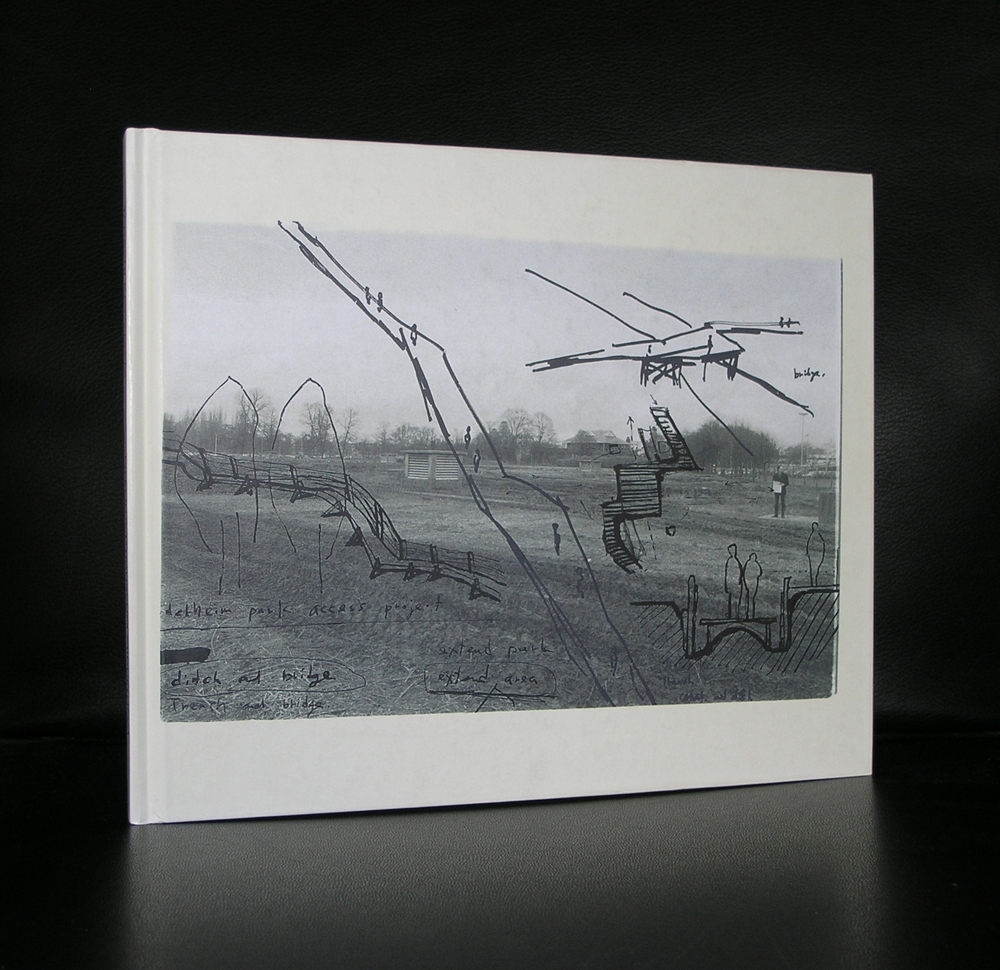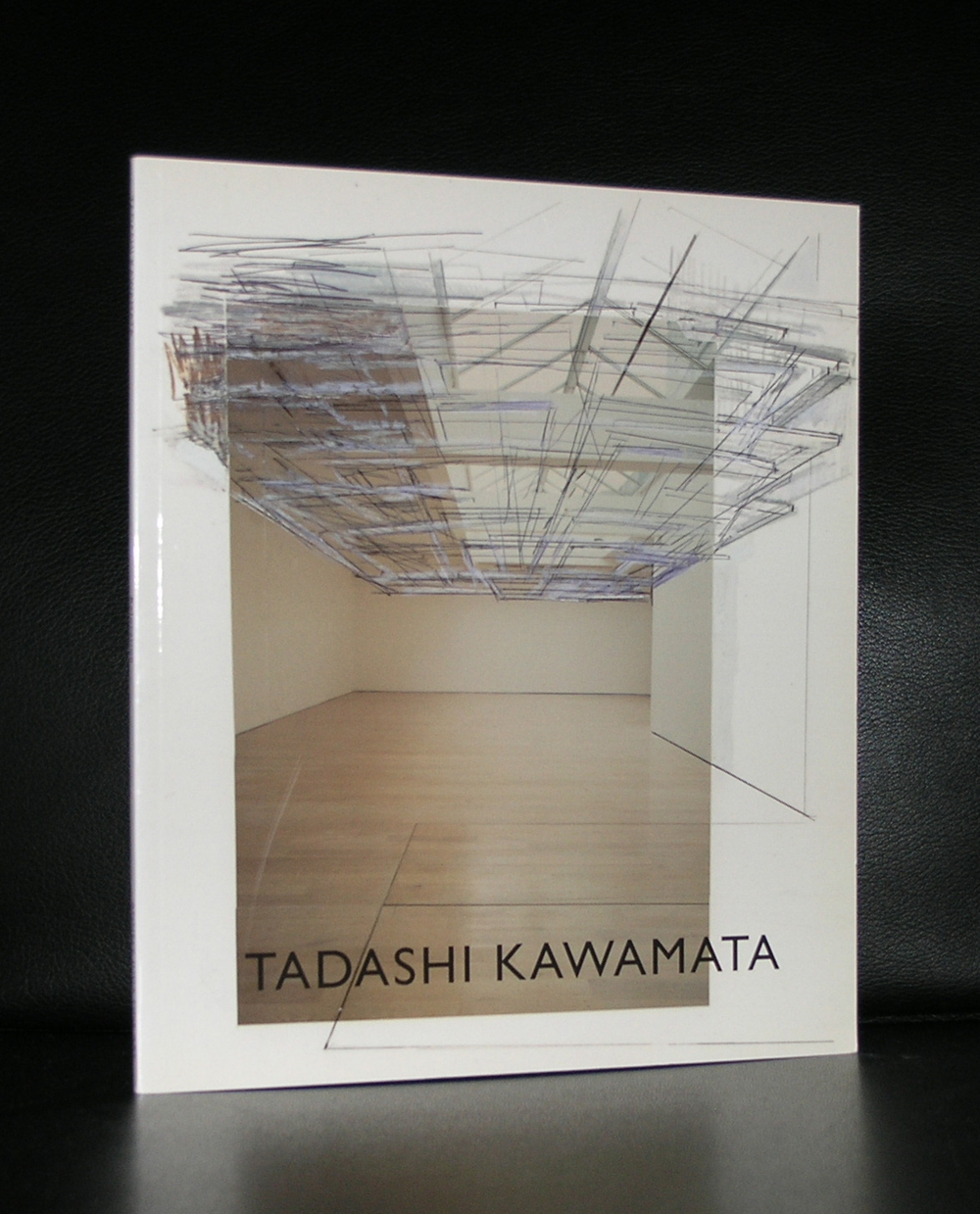
Hailing from Hokkaidō, Japan in 1953, Tadashi Kawamata currently resides and works in both Tokyo and Paris. His artistic journey, which began in the 1970s when he studied painting, sets itself apart with a notable lack of complacency. Nothing is taken for granted as Kawamata immerses us in a process that demands careful examination of the environments we create for ourselves, provoking questions of human needs and desires. With a keen eye for context, Kawamata selects his gestures and materials with great precision.
Renowned for his in situ interventions, Kawamata pieces together installations using various materials such as wooden planks, chairs, and barrels. Utilizing these materials, he constructs fragile Babylonian structures, treehouses, roof installations, and even stretches them out to form serpentine shapes. For those who dare to experiment with his works, climb up onto them, or simply set foot on them, a new perspective is revealed – in every sense – of the space they are situated in.
Kawamata’s work has been displayed in prominent international institutions, including MAAT in Lisbon (2018), Pushkin Museum in Moscow (2018), Made in Cloister in Napoli (2017), the Thurgau Art Museum in Switzerland (2014), the Centre Pompidou in Paris (2010 and 2016), the Toyosu Dome in Tokyo (2010-2013), the HKW in Berlin (2009), the Art Tower Mito in Mito (2001), the Serpentine Gallery in London (1997), the Artpace San Antonio (1998), and the MACBA in Barcelona (1996). He has also been featured in various art biennales, such as the Venice Biennale (1982), documenta 8 and IX (1987 and 1992), the international Biennale of São Paulo (1987), the Contemporary Art Biennale in Lyon (1993), the Skulptur Projekte Münster (1997), the Sydney Biennale (1998), the Jerusalem Biennale (1999), the Echigo-Tsumari Art Triennale in Niigata (2000), the Shanghai Biennale, and the Busan Biennale.
www.ftn-books.com has several Kawamata publications available.











